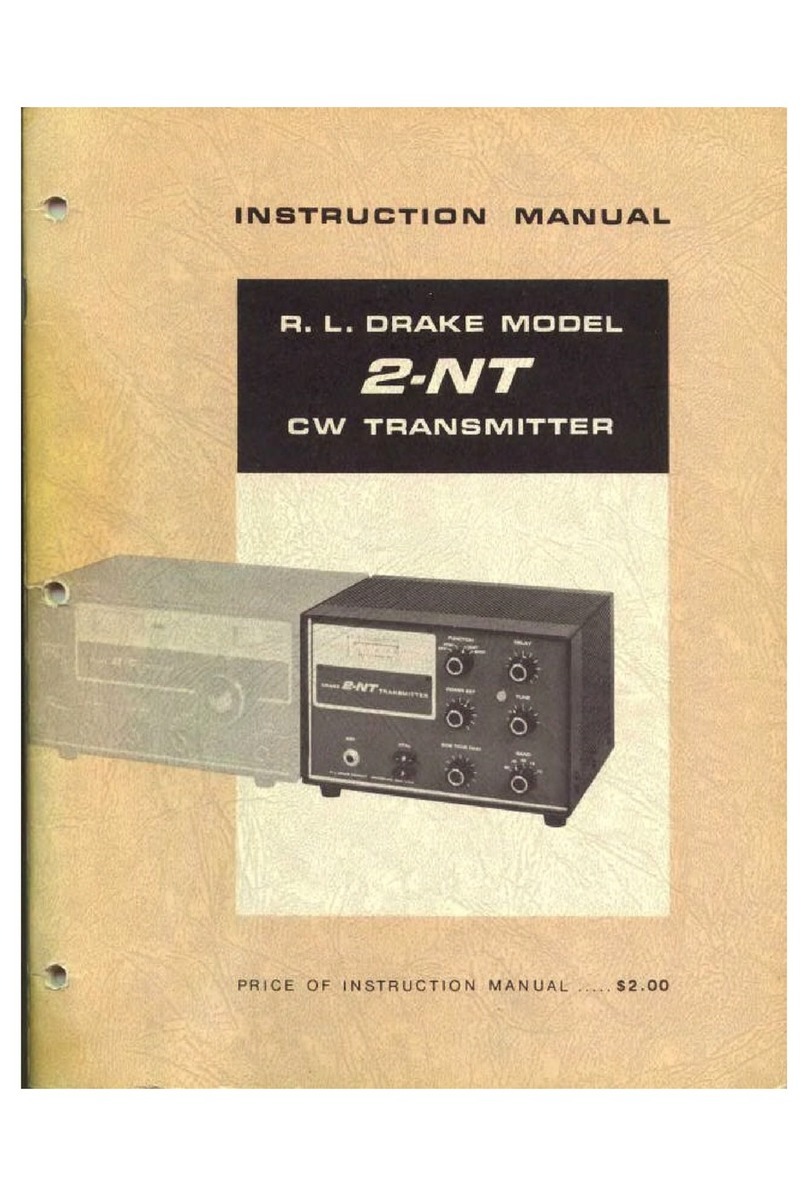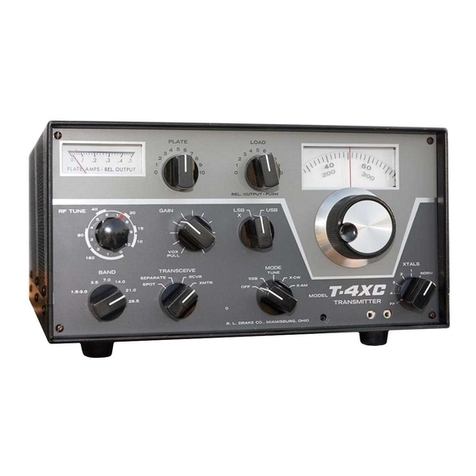
TABLE
GENERAL
SPECIFICATIONS---------------
MODES
OF
OPERATION-------------------
CONTROLS
&
JACKS---------------------
POWER
REQUIREMENTS-~-----------------
POWER
SUPPLY
SPECIFICATIONS----------
TUBES
&
SEMICONDUCTOR
COMPLEMENT----~-
Il.
IIt.
IV.
DESCRIPTION---------------------
INSTALLATION
INSTRUCTIONS
-------
A.
Unpacking
B.
Location
C.
Power
Requirements
D.
Antenna
Requirements
E.
Receiver
Muting
F.
Receiver
Antenna
Switching
G.
Anti-Vox
&
Sidetone
H.
R-4
Injection
I.
Microphone
Requirements
J.
Speaker
K.
Ground
Requirements
L.
Linear
Amplifier
Connection
CONTROL
FUNCTIONS---------------
A.
Front
Controls
B.
Side
Controls
&
Jacks
C.
Rear
Connections
&
Controls
D.
Inside
Controls
TUNING
PROCEDURE------------7777
A.
Bias
Adjustment
B.
Tune
Up
on
Desired
Band
C.
Carrier
Balance
Adjustment
D.
Transceive
Alignment
OPERATION---------erre-
rrr
rrr
A.
Voice
Controlled
&
PIT
Operation
on
SSB
B.
CW
Operation
Cc.
AM
Operation
D.
Spotting
E.
Transceiving
F.
Operation
on
Accessory
Tuneable
Ranges
G.
Crystal
Controlled
Operation
H.
Operation
with
a
Linear
Amplifier
I.
RTTY
Operation
with
an
R-4/R-4A/R-4B
and
T-4B
DADUNUNMUNUNPR
HLH
OF
CONTENTS
PAGE
VI.
THEORY
OF
OPERATION------------~-
27
VII.
SERVICE
DATA---------<c-r-er-
A>
29
A.
Removing
Top
Cover
29
B.
Removing
Bottom
Cover
29
C.
Tube
Replacement
29
D.
Trouble-Shooting
29
VIII.ALIGNMENT
INSTRUCTIONS
---------
34
A.
Adjustment
of
RF
&
34
Mixer
Stages
B.
Carrier
Osc.,
Filter
Match
35
&
Balanced
Modulator
C.
Neutralizing
Final
Amp.
35
IX.
AC-4
POWER
SUPPLY--------<-c---"
37
X.
DC-4
POWER
SUPPLY------------77
38
CHARTS
&
ILLUSTRATIONS
MILA
SS
OS
Ee
eee
PAGE
Microphone
Wiring
Dwg.----
6
Connecting
T-4B
to
R-4B---
7
Connecting
T-4B
to
a
LA---
7
Connecting
T-4B
to
a------
8
Receiver.
-----------r
one
8
Viewing
Angle
Options-----
8
Side
View
T-4B------------
12
Rear
View
T-4B------------
12
TR-448
Illustration-------
23
RF
Tune
Curves------------
24
FSK
Circuits--------------
25
Block
Diagram
T-4B--------
26
Resistance
Chart----------
30
Voltage
Chart-------------
30
Top
View
T-4B-------------
31
Bottom
View
T-4B----------
32
8
Pole
Crystal
Atten.-----
20
C
t
ey
Chart
HCO
Sematic----
oe
en
es
37
DC-4
Schematic------------
39
T-4B
Schematic--(fold
out
page)































